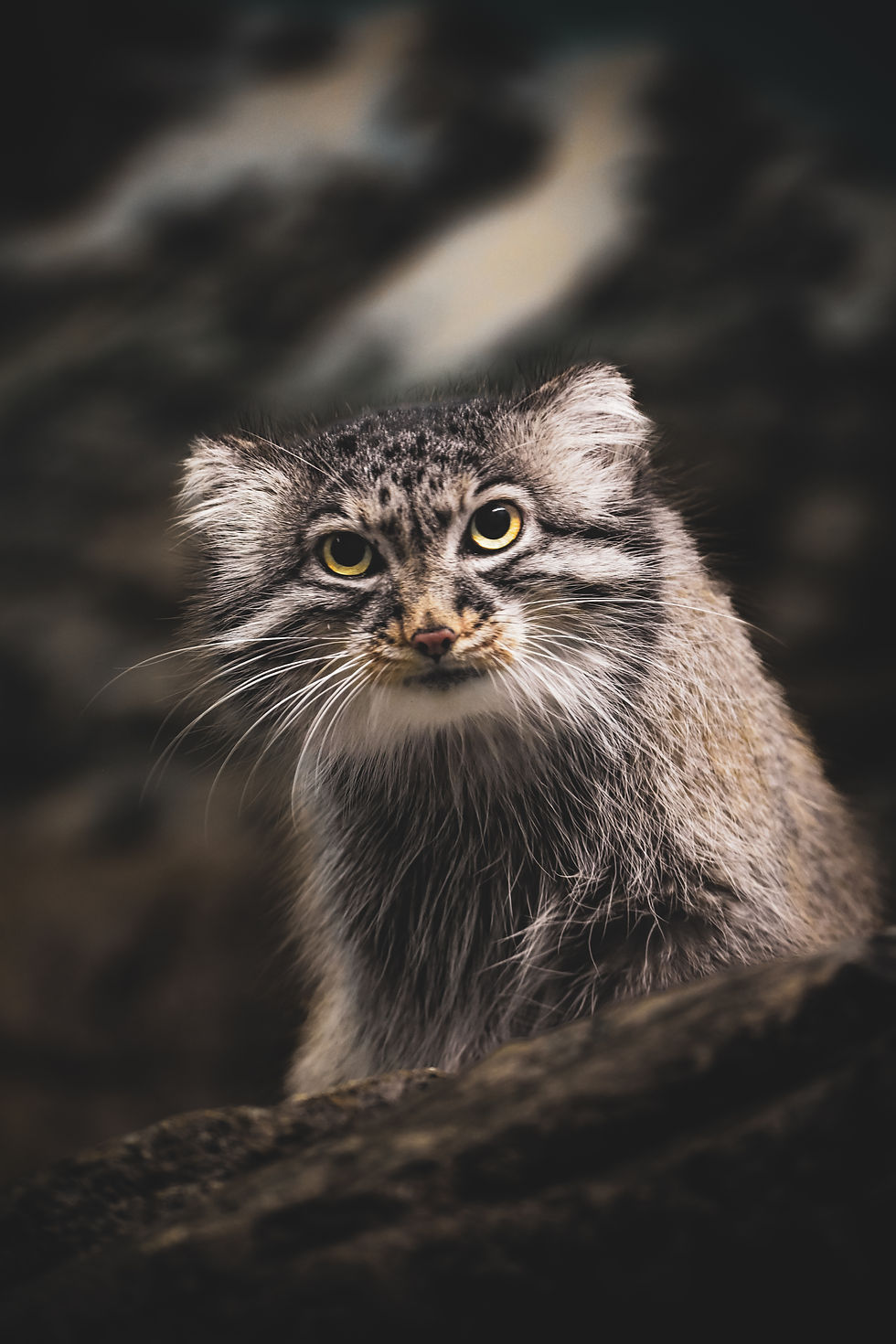The Pallas's Cat Unveiled: Understanding the Mysteries of This Remarkable Wild Feline
- Kiara Josefine
- Jul 15
- 4 min read
The Pallas’s cat is a fascinating wild cat species that captures the attention of wildlife lovers and casual observers alike. At first glance, its small size, fluffy fur, and wide-eyed gaze may remind you of an average house cat. However, a closer look reveals that this charming feline is much more than it seems.
Found in the rugged terrains and harsh climates of Central Asia, the Pallas’s cat is a master of stealth and camouflage. Their presence in the wild invites everyone to learn about their extraordinary lives and the challenges they endure in a rapidly changing environment.

Habitat and Distribution
Pallas's cats reside in some of the most rugged landscapes on the planet. They primarily inhabit regions of Central Asia, specifically in Mongolia, Kazakhstan, and sections of Tibet. These areas feature steppes and mountainous zones, where rocky outcrops provide both shelter and hunting grounds.
Adapted to endure extreme cold, the Pallas’s cat boasts thick, dense fur that keeps it warm in freezing temperatures that can drop to -40 degrees Fahrenheit. The distinctive gray and mottled coat patterns allow for perfect camouflage against the rocky landscape, helping them evade predators and surprise prey. A fascinating statistic is that Pallas's cats can blend in remarkably well, with up to 95% of their body parts matching their surroundings.
These cats prefer solitary lifestyles, although they may form small family groups. Witnessing them in their natural habitats is a unique experience, as their elusive nature adds to their intrigue.
Hunting and Diet
Pallas's cats have evolved hunting strategies that focus on stealth rather than speed. Unlike larger cats, they patiently stalk their prey, which typically consists of small mammals such as gerbils, birds, and rodents. For instance, they can catch small rodents that make up about 50% of their diet in a single leap from a distance of just 6 to 10 feet.
Their keen eyesight and hearing enable them to detect movement in their often-desolate surroundings, giving them an edge over their prey. Their low hunting profile and camouflage enhance their effectiveness as stealthy predators. Interestingly, these cats are critical in maintaining ecological balance, as they help control populations of small mammals, showcasing the significance of every species in their ecosystem.
Behavior and Adaptations
Pallas's cats are intriguing not just for their looks, but also for their unique behaviors. They are known for their curious nature and spend considerable time exploring their environment. Among the younger cats, playful behavior is common, which is essential for developing hunting skills.
With their flat faces and round pupils, these cats communicate a wide range of expressions, reflecting curiosity and caution. Their relatively short limbs are ideal for navigating rocky terrain while conserving energy.
Moreover, Pallas’s cats use a variety of vocalizations, including growls, purrs, and hisses. Unlike many of their feline cousins, they do not roar, which adds to their charm and uniqueness.
Conservation Status of Pallas's Cat
Despite their captivating nature, Pallas’s cats face significant threats and are classified as Near Threatened. Their populations are declining due to habitat loss, overhunting, and diseases from domestic animals. A concerning statistic is that habitat destruction has reduced their range by approximately 30%.
Efforts to preserve their habitats and establish protected areas are vital for the survival of Pallas’s cats. Organizations and conservation programs, including those at the Cincinnati Zoo, are actively raising awareness and implementing strategies to protect these remarkable animals.
Engaging local communities in conservation education is essential, as it fosters appreciation for these cats and their habitats. Only through collective efforts can we hope to secure a future for these incredible wild felines.
The Role of Photography in Awareness
Wildlife photography plays a vital role in raising awareness about species like the Pallas’s cat. Stunning images of these elusive animals often inspire admiration and curiosity, encouraging discussions about conservation.
Photographers frequently face the challenges of capturing the beauty of Pallas’s cats in their natural environments. The resulting photographs not only create visual art but also act as powerful tools for education and advocacy.
By showcasing the Pallas’s cat's behaviors and habitats, photographers highlight the importance of preserving not only this unique species but also the ecosystems that support them.
The Big Picture
The Pallas's cat stands as a small yet significant representative of the wild cat family, drawing attention with its striking appearance and fascinating behaviors. Its adaptations to a harsh environment reflect the wonders of evolution and the fragile balance of nature.
As human activities continue to affect the natural world, the survival of the Pallas's cat and its habitat depends on informed conservation efforts. By increasing awareness and understanding of this extraordinary wild feline, we can contribute to initiatives aimed at ensuring their protection for future generations.
Understanding the mysteries of the Pallas’s cat not only enriches our knowledge of a unique species but also emphasizes our vital role in conserving the diverse wildlife that shares our planet.







Comments